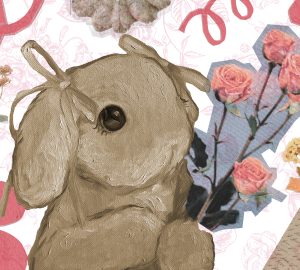Exploring the Tibetan riots and their origins
By Jeff Yu

The recent 2008 Tibet unrest began on March 10, the 49th anniversary of the failed 1959 uprising against Chinese rule. Recent demonstrations began when 300 monks demanded that imprisoned monks to be released; the ensuing riots developed into violence because of political demands.
On March 14, the Tibetan rioters attacked the non-Tibetan Han Chinese interest in the Tibet Autonomous Region. Wen Jiabao, the Premier of the People’s Republic of China, stated that the riots in China occurred at the same time as other attacks on Chinese embassies and consulates. James Miles of CNN reported that the attacks by the Tibetan rioters were “calculated violence” against two ethnic groups, the “Han Chinese living in Lhasa, but also members of the Muslim Hui minority in Lhasa.” In response to the rioting, the Chinese government sent law enforcement into the troubled region to stabilize the situation.
The scene of the riots is strangely familiar; the smashing of the Han-Chinese shops and the burning of non-Tibetan hotels is similar to the Kristallnacht riots in Nazi Germany. Both events were the result of a majority attacking minority groups in the region due to ethnic hate and political purposes. In order to understand this event better, it is necessary to delve deeper into the history between Tibet and China.
From the seventh to 11th century, Tibet was ruled by a series of Kings; during which it had lost all of its Central Asian possessions to the Chinese. However, around 821AD, China and Tibet signed a treaty to respect their borders; a bilingual account now stands outside the Jokang temple outside of Lhasa. Afterwards, Tibet remained independent until it was conquered by the Dzungars in 1717. Eventually, the Dzungars were expelled by Chinese emperor Kang Xi in 1720. The region was then incorporated in the Qing sovereignty. In 1791, the Gurkha invaded Tibet and forced the Panchan Lama to flee. The Qianlong Emperor intervened by sending 13,000 soldiers into Tibet to drive out the invaders. Soon after, the emperor decreed that future selection of Lamas have to be held under the supervision of the Qing government’s Amban Commissioners in Lhasa.
When the Dalai Lama’s title was restored in 1908, he attempted to return but was forced into exile by Chinese forces in 1909. The Chinese remained in control until after 1911 when the Qing dynasty fell. The Dalai Lama returned once again to control Tibet until the 1950s when the People’s Liberation Army, with support of a portion of the Tibetan population and Monastic leaders, invaded Tibet and defeated the Tibetan army. Both sides signed the Seventeen Point Agreement in 1951 which incorporated Tibet into China’s territory; the agreement continues to date.
China continues to abide by these points even after the unrest in 1959 started by separatist Tibetans. All international governments now acknowledge China’s claim to Tibet; they have not recognized the Government of Tibet in Exile in India.
In the recent years, citizens of China have migrated into Lhasa, and now own many of the small businesses. The Tibetans became angered by the inflation that increased the cost of basic necessities. Inhabitants also worried that the railway built to connect Lhasa and China would increase the number of migrants to the city. The residents also complained about not having equal access to jobs and education. As a result, the Tibetans have started to riot. The People’s Republic of China did not intervene immediately because the officials feared that decisive actions might alienate the international community.
Reporter John Miles of CNN commented in an interview that the Chinese government “sacrificed the livelihoods of many, many ethnic Han Chinese in the city for the sake of letting the rioters vent their anger.” The Chinese government made a decisive move only after they felt safe that “there would not be massive bloodshed” when the riots started to die down. The interesting thing about this comment is that John Miles is a foreign media reporter, a group usually censored by the Chinese government. However, in the light of recent events, the Chinese government has been allowing foreign media reporters into the troubled regions of Tibet, something that has not been seen in the past few decades.

Surprisingly, many of the nations around the world denounced the boycott of the Beijing Olympics. Some even stated that the Tibet unrest is China’s “internal affair.” The only caution they have issued is for China to not use more force than is needed and try to achieve a “peaceful resolution.” As the foreign ministry spokesman Qin Gang has said, “It is a clear proof that the international community is on the side of China.”
The recent “crackdowns” have been condemned by several nations; a few nations even condemned the Chinese responses as a violation of human rights. However, no one ever mentioned that before Chinese intervention, the Tibetans were already throwing Molotov cocktails at Han-Chinese residences, no one ever mentioned the slavery of Tibetans by the Tibetan government, and no one ever mentioned the Dalai Lama trying to regain power and control over Tibet just like his predecessors. Instead, several news reporters like Germany’s Der Spiegel have been cropping pictures to show “Chinese military while screening out Tibetan rioters, or putting pictures of Indian and Nepalese police wrestling Tibetan protesters with captions about China’s crackdown.” Many of the media today are biased toward events and feed the public with opinions rather than history. That is why it is important of every person to be familiar with history before forming their opinions based on any subject.
Photo of Nepalese police provided by Reuters
























